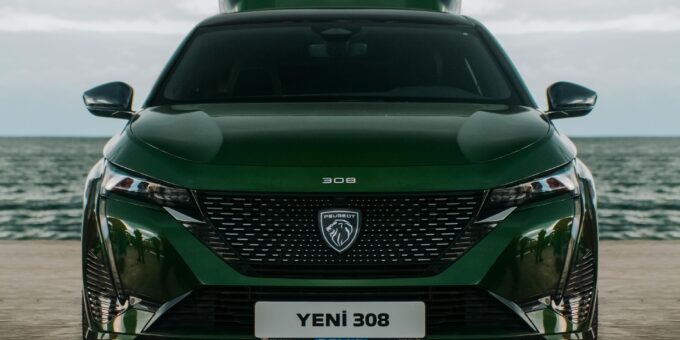
What Are Trim Levels?
Trim levels refer to different versions of the same car model, each offering unique features and configurations. Manufacturers create trims to cater to a variety of buyers, from budget-conscious drivers to those seeking luxury and performance.
Example:
For the Toyota RAV4, common trims include:
- LE (Base Trim): Basic features with affordability in mind.
- XLE (Mid-Tier Trim): Adds more comfort and technology.
- Limited (Top Trim): Includes premium features and advanced tech.
Trim levels can also include additional sub-levels or packages, such as “Sport” or “Luxury.”
How Trim Levels Affect Pricing
The price of a car increases as you move up the trim levels due to added features, performance upgrades, and luxury options.
Example Price Breakdown:
- Base Trim: $25,000 (Essential features only).
- Mid-Tier Trim: $30,000 (Adds upgraded technology and comfort features).
- Top Trim: $35,000 (Includes premium materials, advanced safety, and better performance).
When evaluating trim levels, consider whether the added features justify the price difference.
Common Trim Level Names and What They Mean
Manufacturers use unique naming conventions for trims, but there are common patterns:
- Base Trims: LE, SE, L, S, LX
- Focused on affordability and practicality.
- Mid-Tier Trims: XLE, EX, Sport, Touring
- Offers a balance of features and price.
- Top Trims: Limited, Platinum, Premium, High Country
- Fully loaded with luxury features, advanced tech, and superior performance.
Tip: Check the manufacturer’s website for details on what each trim level includes.
Key Features That Differentiate Trim Levels
Here’s how trims differ across categories:
- Performance:
- Base trims may have smaller engines or front-wheel drive (FWD).
- Higher trims often offer larger engines, turbocharged options, or all-wheel drive (AWD).
- Technology:
- Base trims: Smaller screens, basic infotainment systems.
- Higher trims: Larger touchscreens, navigation, and premium audio.
- Safety:
- Base trims: Standard airbags and basic safety systems (e.g., ABS, stability control).
- Higher trims: Advanced driver-assistance features like adaptive cruise control and blind-spot monitoring.
- Comfort:
- Base trims: Cloth seats and manual climate control.
- Higher trims: Leather upholstery, heated/ventilated seats, and dual-zone climate control.
How to Compare Trim Levels Within a Model
Follow these steps to compare trims effectively:
- List Your Must-Have Features: Identify what’s non-negotiable for you (e.g., safety features, fuel efficiency).
- Create a Comparison Table: Use manufacturer websites to compare trims side-by-side.
- Check the Price Difference: Evaluate if the added features are worth the additional cost.
- Consider Long-Term Value: Think about resale value and reliability.
Should You Upgrade to a Higher Trim?
Upgrading to a higher trim makes sense if:
- The additional features meet your needs or enhance safety.
- You value luxury or advanced technology.
- The higher trim offers better resale value.
However, if the upgrades don’t align with your lifestyle, stick with a lower trim and save money.
Performance Upgrades in Higher Trims
Higher trims often include:
- Larger, more powerful engines.
- AWD or 4WD options for better handling.
- Sport-tuned suspensions for improved performance.
Example:
A base Ford F-150 may have a standard V6 engine, while a higher trim offers a V8 or hybrid powertrain.
Technology and Infotainment Options
Technology is a key differentiator between trims:
- Base trims: Smaller screens, basic audio, and limited smartphone integration.
- Higher trims: Larger touchscreens, wireless charging, and premium audio systems like Bose or Harman Kardon.
Safety Features by Trim
Advanced safety systems are often reserved for mid- or top-tier trims:
- Base Trims: Rearview camera, ABS, and basic airbags.
- Higher Trims: Lane-keeping assist, adaptive cruise control, and 360-degree cameras.
Tip: If safety is a priority, consider a mid-tier trim with advanced driver-assistance features.
Customization Options for Trims
Many manufacturers offer optional packages or standalone upgrades to customize your trim.
Example Packages:
- Technology Package: Adds navigation and upgraded infotainment.
- Towing Package: Adds a hitch, upgraded cooling, and towing controls.
Cost vs. Value: Are Premium Trims Worth It?
Premium trims are worth the cost if:
- You plan to use the advanced features regularly (e.g., towing, off-roading, or long trips).
- You want the best possible resale value.
If luxury features are not a priority, stick with a mid-tier trim for better value.
Best Practices for Choosing a Trim Level
- Set a Budget: Know your spending limits and avoid exceeding them for non-essential features.
- Focus on Essentials: Prioritize features like safety, reliability, and comfort over luxury extras.
- Test Drive Multiple Trims: Experience the differences firsthand before deciding.
Using Online Tools to Compare Trim Levels
Leverage these websites for side-by-side trim comparisons:
- Edmunds: Offers a detailed breakdown of trim levels and pricing.
- Cars.com: Includes side-by-side comparisons for features and specifications.
- Kelley Blue Book: Provides pricing insights and trim recommendations.